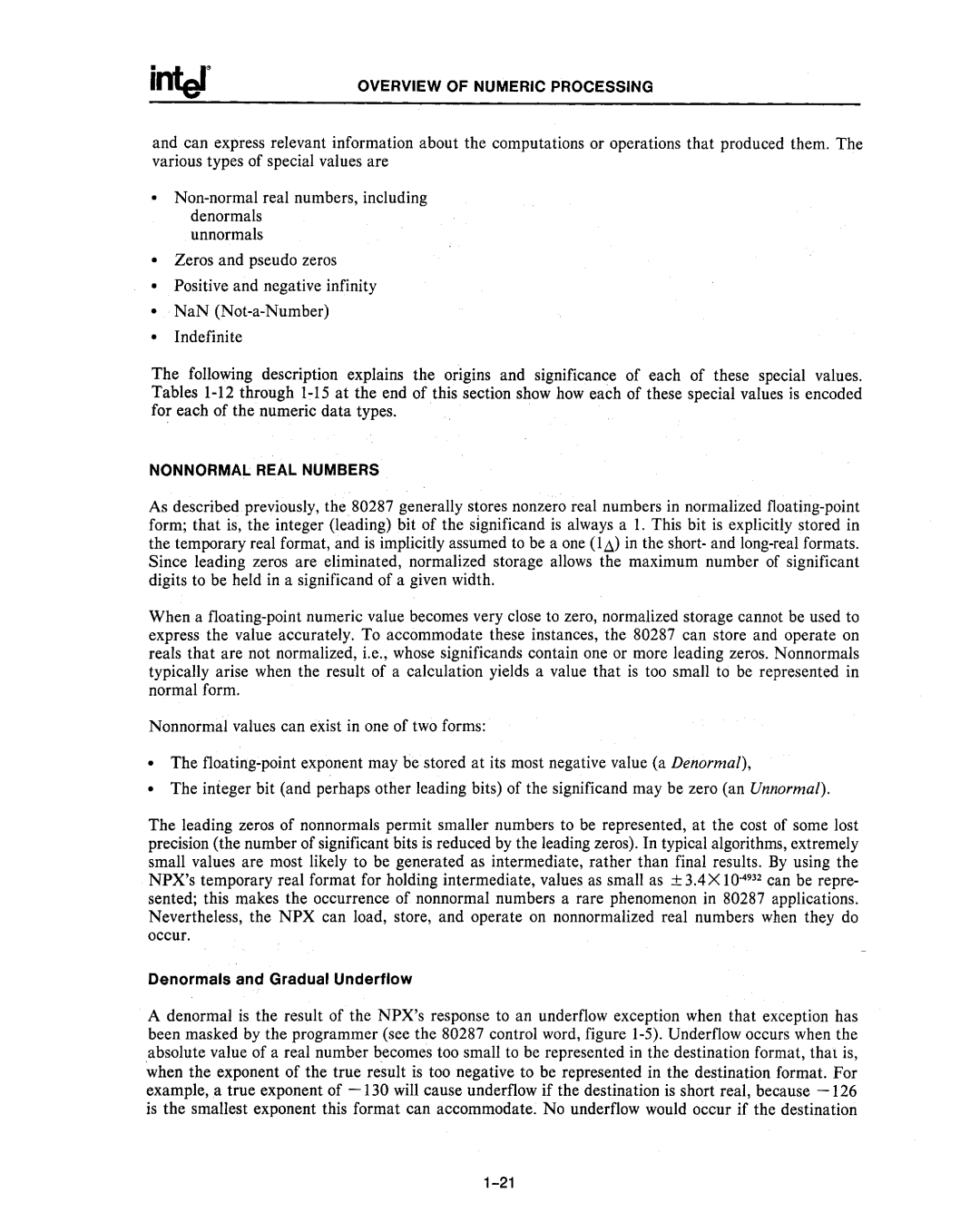
OVERVIEW OF NUMERIC PROCESSING
and can express relevant information about the computations or operations that produced them. The various types of special values are
unnormals
Zeros and pseudo zeros
Positive and negative infinity
NaN
Indefinite
The following description explains the ongms and significance of each of these special values. Tables
NONNORMAL REAL NUMBERS
As described previously, the 80287 generally stores nonzero real numbers in normalized
When a
Nonnormal values can exist in one of two forms:
The
• The integer bit (and perhaps other leading bits) of the significand may be zero (an Unnormal).
The leading zeros of nonnormals permit smaller numbers to be represented, at the cost of some lost precision (the number of significant bits is reduced by the leading zeros). In typical algorithms, extremely small values are most likely to be generated as intermediate, rather than final results. By using the NPX's temporary real format for holding intermediate, values as small as ± 3.4 XI
Denormals and Gradual Underflow
A denormal is the result of the NPX's response to an underflow exception when that exception has been masked by the programmer (see the 80287 control word, figure
